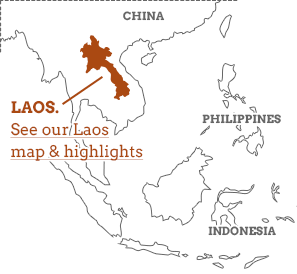Put simply, Laos is beguiling: the mysterious neighbour of Thailand, a country that sees 10 times more foreign visitors annually, but has not one ounce of Laos’s enigmatic pull. Enchanting and unspoiled, the country retains a very laid back and distinctly old-fashioned charm, its architecture vying between the stilted wooden huts of its shabby riverside settlements, decaying colonial piles, and impeccably preserved French-Indochinese temples.
![]()
Nestled in a ring of misty mountains and lapped by the lazy Mekong, this timeless land of chanting monks and faded colonial grandeur is alive with the magic of the past
![]()
The pace of life in Laos is indulgently slow, but opt for a lie-in and you’ll miss the essence of what makes this Buddhist nation so effortlessly spellbinding. With the dawn comes shuffling monks in robes of bright burned orange, and the riverbanks, lapped at by the lazy waves of the Mekong River and cradled by a protective ring of mist-shrouded mountains, come alive with the fascinating and staggeringly simple day to day lives of its gentle people.
Plan your journey into Southeast Asia’s most hidden gem with our Laos travel guide.





























